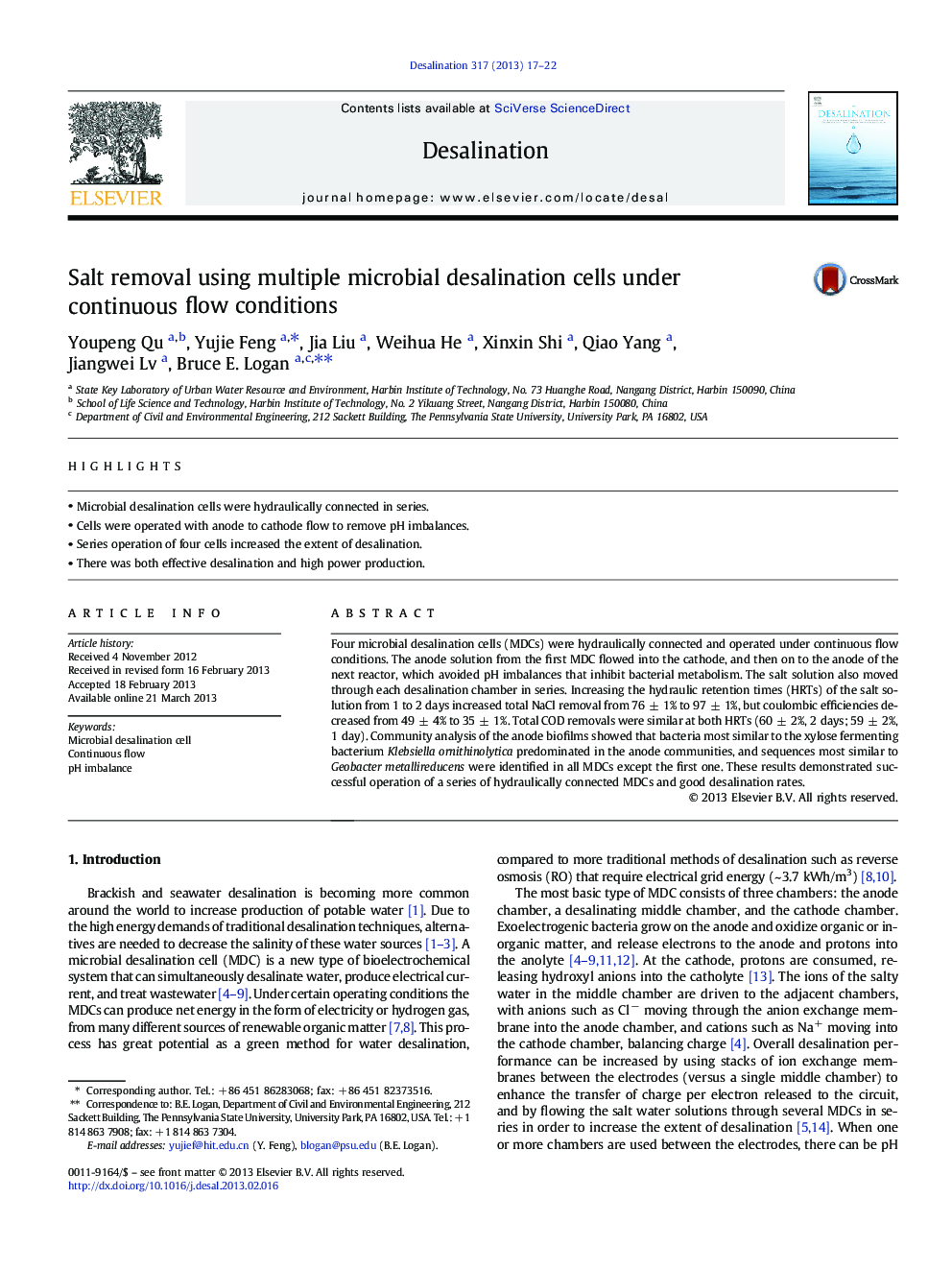| Article ID | Journal | Published Year | Pages | File Type |
|---|---|---|---|---|
| 623961 | Desalination | 2013 | 6 Pages |
Four microbial desalination cells (MDCs) were hydraulically connected and operated under continuous flow conditions. The anode solution from the first MDC flowed into the cathode, and then on to the anode of the next reactor, which avoided pH imbalances that inhibit bacterial metabolism. The salt solution also moved through each desalination chamber in series. Increasing the hydraulic retention times (HRTs) of the salt solution from 1 to 2 days increased total NaCl removal from 76 ± 1% to 97 ± 1%, but coulombic efficiencies decreased from 49 ± 4% to 35 ± 1%. Total COD removals were similar at both HRTs (60 ± 2%, 2 days; 59 ± 2%, 1 day). Community analysis of the anode biofilms showed that bacteria most similar to the xylose fermenting bacterium Klebsiella ornithinolytica predominated in the anode communities, and sequences most similar to Geobacter metallireducens were identified in all MDCs except the first one. These results demonstrated successful operation of a series of hydraulically connected MDCs and good desalination rates.
•Microbial desalination cells were hydraulically connected in series.•Cells were operated with anode to cathode flow to remove pH imbalances.•Series operation of four cells increased the extent of desalination.•There was both effective desalination and high power production.
